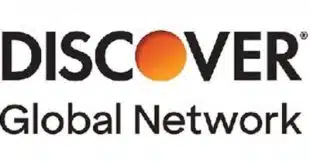New technologies and market entrants are exerting downward pressure on acceptance costs for mobile payments. But how much longer will these costs matter?
Card payments can be exceedingly complex, but in some ways they’re simple. Whip out a functioning credit or debit card to pay in a store and the merchant pays card-present discount rates. Charge something online or over the phone and, surprise, surprise, the merchant pays higher, card-not-present rates.
The coming of mobile payments, however, is blurring these once-distinct lines. Some mobile payments are assessed card-present rates, while others pay CNP rates. But there’s a bigger question that a growing number payments executives and industry analysts are asking: Will the ever-stronger fortifications around mobile payments force down merchants’ acceptance costs?
Interchange is the major component of Visa and MasterCard transaction expense. The rationale for higher CNP interchange was formulated back in the 1990s, when online payments clearly were much riskier than card-present transactions. That rationale is fading fast, according to some observers.
The industry, says payments consultant Eric Grover of Minden, Nev.-based Intrepid Ventures, “has boxed itself in” in defense of CNP rates. By industry, he means the major card networks and online payments leader PayPal Holdings Inc. What everyone is waiting for, he says, is a “reasonable body of transaction data” and related data about fraud to be accumulated. Such information isn’t yet available, but Grover expects that when it is, it’ll show that the fraud risk in mobile payments is shrinking.
And once that happens? “The industry will stonewall, they will hem and haw, and they will lower interchange rates,” Grover predicts.
Meanwhile, newer mobile-payments firms such as Square Inc. and Dwolla Inc. have gained share not only because of their technology, but also because their pricing schedules are refreshingly simple and transparent—and offer acceptance costs that are often lower than those from traditional merchant acquirers.
“It’s not just the expense of interchange, it’s the opacity,” says James Wester, research director of worldwide payment strategies at Framingham, Mass.-based IDC Financial Insights.
More Secure
Technology is playing a key role in this growing pressure on mobile-payments pricing. The new mobile schemes typically encrypt data, use tokenization to convert card numbers into data strings, and use near-field communication (NFC) or other telecommunications technology for contactless transactions. And Apple Inc.’s Apple Pay and some other systems also use biometrics.
In other words, the cardholder is present, if not the card, and the new technologies are authenticating both the mobile device and the device user—making data virtually impossible for a fraudster to use even if it were stolen. That provides much more security than the protection afforded by traditional magnetic-stripe cards, and probably is on par if not better than that offered by the new—new to the U.S. market, that is—EMV chips on payment cards.
“Any mobile payment that uses multifactor authentication is more secure than a magnetic stripe,” says mobile-payments consultant Richard K. Crone, chief executive of Crone Consulting LLC, San Carlos, Calif.
Mobile payments using NFC will get card-present rates today, according to Crone and Wester. Such payments access cardholder data on a smart phone’s secure element, and if a bank card is funding the transaction, they’ll use tokens rendered by the Visa and MasterCard tokenization services.
An NFC variant called host card emulation, or HCE, in which cardholder data are stored in the cloud rather than on the secure element, also qualifies the merchant for card-present rates, according to Wester.
Also qualifying for card-present rates are transactions using Magnetic Secure Transmission (MST), a contactless technology available through Samsung Electronics Co. Ltd.’s Samsung Pay service that uses tokenized data and works with existing mag-stripe terminals.
Other forms of mobile payment are assessed CNP rates because they’re considered online payments. These include in-app payments in which the payment functionality is embedded into another app, such as a merchant’s mobile application for shoppers that offers product listings, store locations, and other information, according to Nick Nayfack, director of mobile payments at Symmes Township, Ohio-based Vantiv Inc., a major e-commerce merchant processor.
Payments that use QR codes or bar codes also will get CNP rates if they do not use a token from the networks’ sanctioned token service providers, according to Crone. Visa Inc., MasterCard Inc., and American Express Co. dominate the provisioning of tokens, but other companies are pressing to join them—and potentially bring down the cost of this aspect of mobile payments (“Opening Up the Club,” March).
Spokespersons for Visa and MasterCard did not respond to requests from Digital Transactions for comment for this story.
In a League of Its Own
It’s not just technology that is exerting downward pressure on mobile-payments pricing. Other factors include government actions and the emergence of powerful new mobile-payments players.
Some experts note that government regulations in other parts of the world, including Europe and Australia, have forced big cuts in acceptance pricing. But with the exception of the debit card price cap in the Durbin Amendment in the 2010 Dodd-Frank Act, which chopped big card issuers’ debit-interchange revenues in half, the U.S. has largely avoided government-imposed acceptance pricing.
Instead, the rise of new players in mobile payments could easily become a force that rivals technology in affecting pricing. Some big, powerful companies, including Apple, Alphabet Inc./Google, and Samsung already are well-known names in the space. On the retailer side, leading chain Wal-Mart Stores Inc. has already begun rolling out a mobile wallet called Walmart Pay.
But the nation’s biggest bank, JPMorgan Chase & Co., is in a league of its own. Last October, JPMorgan Chase announced plans for Chase Pay, a mobile-payments service that will leverage its huge cardholder base—94 million credit, debit, and prepaid card accounts—and its massive Chase Paymentech merchant-acquiring subsidiary.
Chase has licensed network functionality from Visa to create what is effectively its own closed-loop payment system of cardholders and merchants. The bank plans to populate its mobile-banking app with Chase Pay, and all 94 million card accounts will be preloaded into the digital wallets.
Chase Paymentech merchants, meanwhile, will pay no interchange or network fees on Chase Pay transactions, just straight fees to Chase with volume discounts, according to Crone. The bank also is promising that merchants will have zero fraud liability on Chase Pay transactions, he says.
“This has put pressure on the [bank card networks], given that Chase is the dominant market leader,” says Crone. “They [Chase] are going to win business on both sides of the fence.”
Chase will launch a pilot for Chase Pay this summer and start what it calls a phased rollout in the fourth quarter. A spokesman says some e-commerce merchants have already been boarded. Starbucks Corp. is Chase Pay’s most prominent acceptor so far.
“We are live now with select e-commerce merchants and are planning to launch Starbucks and other partners later this year,” the spokesman said.
At the very same time, the retailer-created Merchant Customer Exchange (MCX), developer of the CurrentC mobile-payment app, announced that it was delaying its national rollout to an unspecified time after eight months of testing in Columbus, Ohio. Because of the postponement, MCX also said it was laying off about 30 employees.
Speculation immediately arose that CurrentC was as good as dead, but MCX said it will go forward with a planned partnership with JPMorgan Chase in which CurrentC will be included with Chase Pay.
MCX, which was formed back in 2012, includes among its members Wal-Mart, Target Corp., 7-Eleven Inc., and dozens of other prominent retail names. Ironically, one of MCX’s founding propositions was to break free from onerous bank card interchange.
But ultra-cost-conscious Wal-Mart seems to have made peace with general-purpose cards and is including them in Walmart Pay—even American Express, the most expensive brand for merchants to accept. As of mid-May, Walmart Pay was live in about 700 stores in Texas, Arkansas, and some other locations on its way to chainwide acceptance this summer.
‘It’s About the Data’
Indeed, talk focused solely on mobile-payments interchange “is myopic,” says Vantiv’s Nayfack. “I think the question becomes how do we leverage those existing rails to get past those operational fees,” he says.
Ultimately, the issue is how to make mobile payments far better than using a plastic card. Only when mobile payments are “ten times better” than conventional card payments will they gain mass acceptance by consumers and merchants, according to Nayfack.
The best iterations of mobile payments would provide not only a fast, secure, contactless transaction, one that would not even require the consumer to pull the smart phone out of his pocket, but also would give digital receipts and generate loyalty points for the consumer and useful customer data for the merchant.
Such a payment would be not unlike that of a farmer buying seed at the feed mill with no cash exchanged, just a nod and the implicit promise that the farmer, who’s known the mill owner for years, will be back later to pay up.
“That better experience, ironically, has been around for hundreds of years, but we have to make it scale,” says Nayfack.
Such intimacy paired with scale already exists in other countries, according to Nayfack. In Sweden, a convenience-store chain operates with no employees at the counter; customers enter using NFC-equipped devices and tap to pay for purchases, he says.
Crone also says that the mobile-payments value discussion will go far beyond acceptance costs.
“It’s not about pricing, it’s not about interchange, it’s about the data,” he says. “It will redefine the pricing structure, but it won’t be about interchange and fees, it will be about the revenues that come from data.”




